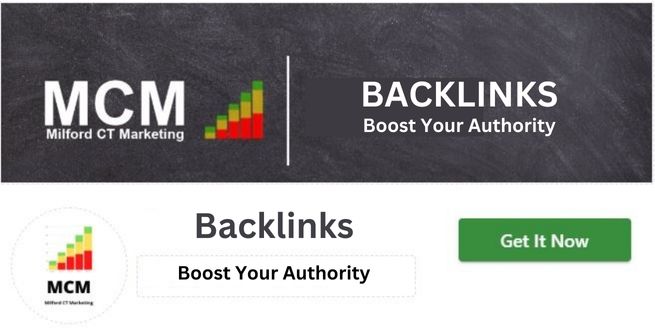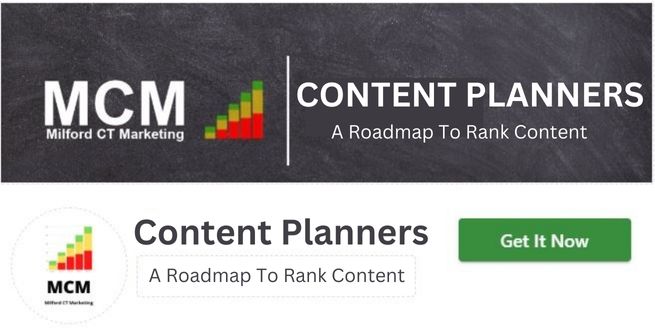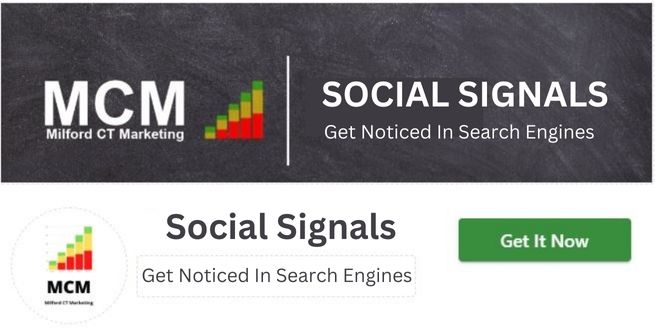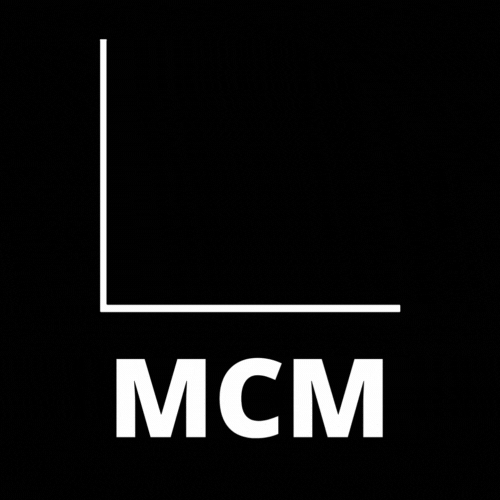Our SEO Products are for the DIYers who know what they need to do to rank but don’t have the time to do everything themselves. Perfect for other SEOs who want to expand and take some of the workload off using our white-label products.
Our SEO Products Are The Best You Can By
If you are an SEO and you don’t have a team let our SEO Products be your team. Doing SEO for many companies takes time and effort and if you have more than 5 clients you will burn out fast.
If you are a webmaster and can’t afford an SEO company to do the work for you, cut the cost by using our SEO products.
By using our products you will free up your time so you can do more of what makes you money. That is prospecting for more clients.

Boost Your Ranking Authority
Our Backlinks are permanent and work period. We have many different kinds of backlinks Click Here To learn more.

Discover What Your Content Is Missing
In order to rank content each page must be SEO optimized learn more by Clicking Here

A Roadmap For Ranking Content
Know exactly what to write, how many words, suggested titles and subtitles, and more learn more by Clicking Here

Rank In Your Local Map Pack
Citations are other business directories mentioning your businesses NAP Information (Name, Address, and Phone Number) learn more by Clicking Here

A Crumb Trail From Points Of Interest To Your Business Location
We build local relevancy links that show search engines your business matters learn more by Clicking Here

Create Brand Awareness
Press releases from time to time get the word out to news media which gives you a boost in ranking every time learn more by Clicking Here

Get Noticed By The Search Engines
Social Signals are a great way to get noticed by the search engines that your website is relevant to learn more Click Here

Know What Keywords Matter
Creating content takes time and using the wrong keywords can either stop you from ranking or bring in the wrong leads learn more by Clicking Here
If you’re a business owner or webmaster looking to get more eyes on your website, then you know how important it is to optimize your website for search engine optimization (SEO). But do you know the best practices for optimizing your website for success? Here, we’ll be diving into what it takes to maximize your website’s SEO potential. Keep reading to get all the tips and tricks you need to take advantage of SEO and get the most out of your website.

Introduction to SEO
If you are seeking to achieve better search engine optimization (SEO) for your website, there is no one-size-fits-all approach. The best way to optimize your site for SEO depends on the content and target audience of your website, as well as the specific keywords and phrases that are important to your industry or niche. To get started with SEO, take a look at our introduction to SEO guide below.

Understanding Keywords and Search Intent
When you’re creating a website, it’s important to think about keywords. Keywords are the words and phrases your website can rank for in search engine results pages (SERPs). There are many ways to find keywords for your site, but one of the most effective methods is keyword research.
To understand how people search on the internet, you need to know what searchers are looking for. When someone types a word or phrase into a Google search bar, their intent is always different. Some people want information; others want products they can buy.
So when you create content for your website, make sure that each article and topic provides useful information for both types of searchers. Add keywords throughout the text, including in headings, in the titles of subsections, and even within individual sentences.
And be sure to use keyword discovery tools like Thesaurus.com to help identify new terms that could be desirable targets for SEO efforts on your site.
In order not to lose sight of your primary goal – providing valuable information – it’s important to periodically assess how well your site is performing with respect to keyword placements and pageviews per visit according to Google Analytics data (or any other traffic metric you may monitor).
If necessary, adjust tactics or revise topics/subscriptions accordingly so as not only to keep visitors coming back but also ensure they stay longer onsite by engaging them with compelling content or taking advantage of available social media marketing opportunities
Creating Quality Content for SEO
Making sure your website is optimized for SEO can be a challenge, but it’s essential to achieve success. Seo products aim to improve the visibility of a website in search engines, so it’s important to make sure your content is high-quality and keyword-rich.
- Firstly, ensure all your text is well-written and easy to understand. This will help you attract visitors who are looking for information on your topic, not just links from other websites.
- Second, make sure each article features keywords that are relevant to your target audience. broadening your keyword selection will help you hit more search engine results pages (SERPs).
- Finally, ensure all your images are sized correctly and include relevant keywords. Including images with high-quality descriptions associated with them can result in higher click-through rates (CTRs) and better SERP placement.
By following these simple tips, you can increase traffic to your website and improve its SEO score – making it easier for potential customers to find you online!
Optimizing Your Website Structure for SEO
Analyzing Your Website’s Search Engine Rankings
There is no one-size-fits-all approach to optimizing a website for search engine rankings, but following a few general guidelines can help ensure your website remains visible to potential customers. First and foremost, make sure your website’s layout is easy to navigate and the pages load quickly. You also want to make sure each page includes high-quality content that is both relevant and interesting to searchers. Finally, optimize your site for Google’s Panda algorithm by making use of quality backlinks and avoiding low-quality content.
All these tips are important, but it’s also important to keep in mind that different search engines offer different ranking techniques. For example, Google favors websites with good natural SEO (search engine optimization from scratch), while Bing favors websites with better on-page optimization. It’s important to research the different search engines and find the one that offers the best ranking for your particular website.
Identifying Important Keywords and Phrases
Optimizing your website structure for SEO is important to ensure that your website is easily found by search engines. By identifying important keywords and phrases, you can create content that is both relevant and useful to your audience.
Some key considerations when optimizing your website for SEO include:
- Title tags and meta descriptions: Title tags are the first thing that users see when they visit a website, and they should be carefully chosen. A good title tag should be descriptive and keyword-rich, and it should be placed at the top of the page. Meta descriptions are a good way to describe your website in a few words, and they should be included in the body of every page.
- Images: Including high-quality images on your website can help improve conversion rates and ranking in search engines. When choosing images, be sure to choose ones that are relevant to the content on your website and that are sized correctly for web pages.
- HTML code: Your website’s HTML code should be error-free and well-organized. It should also include a title tag, meta description, and images.
- Site structure: Creating a well-structured website will make it easier for users to find what they’re looking for on your site, which will boost conversion rates and rankings in search engine results pages (SERPs). To improve site structure, consider using:
Categories: By grouping related content together under specific headings, you can create an organized site that is easy to find.
Links: Links from other websites are a major source of traffic for most websites. Make sure your website links back to the correct pages and titles, and avoid linking to irrelevant or spammy content.
*Content*: The quality of your website’s content is key to its success on the web. Make sure that all your content is high-quality, keyword rich, and relevant to your audience.
By following these simple tips, you can optimize your website for SEO success!
Improving Your On-Page Optimization Strategies
When optimizing your website for SEO, it is important to make sure that your structure is optimized as well. By following some simple on-page optimization strategies, you can ensure that your website is easy to find and navigate, and that your content is easily readable and search engine friendly.
One of the most important things to remember when optimizing your website for SEO is to make sure that all of your content is keyword rich. By including keywords throughout your content, you can help improve your website’s ranking in search engines. Additionally, make sure to use keywords in the titles of your articles, in the headings of your pages, and in the tags associated with your content.
Another important factor to consider when optimizing your website for SEO is the use of images. By including high-quality images on your website, you can help improve the visibility of your content and make it easier for visitors to find and understand. Additionally, make sure to include alt tags for all of your images, and to use keywords in the titles and descriptions of your images.
Finally, it is important to keep your website’s coding clean and well-organized. By following these simple on-page optimization strategies, you can ensure that your website is easy to navigate and that your content is easily readable by search engines.
Leveraging Off-Page SEO Tactics
Optimizing your website for SEO starts with optimizing the structure of your site. The first step is to create a well-organized hierarchy with clear and concise titles, tags, and sections. You also need to make sure that all content is properly keyword-rich and optimized for search engine indexing. Finally, use off-page SEO tactics (such as link building) to improve your ranking on major search engines.
To optimize your website for SEO success, begin by creating a well-organized hierarchy with clear and concise titles, tags, and sections. Titles should be keyword rich and include phrases that are relevant to your niche audience. Taglines can also be helpful optimize specific pages or posts for search engine indexing and help your site appear more personalized. Sections should also be well-formatted and include relevant keywords and phrases. Finally, make sure that all content is properly keyword-rich and optimized for search engine indexing. By properly optimizing your website structure, you can improve the ranking of your site on major search engines.
Off-page SEO tactics are another important way to optimize your website for SEO success. Building links from high authority domains will help improve your site’s rank in Google and other search engines. Search engine optimization experts typically recommend using a combination of on-page optimization techniques (such as keyword placement, headings, subheadings, and metadata) as well as off-page SEO tactics (such as link building). Utilizing a variety of SEO tactics will help improve the ranking of your site on major search engines.
Link-Building Strategies for SEO
Researching Keywords
Search engine optimization (SEO) is one of the most important steps in online marketing. It can help improve your website’s ranking in search engines and attract more visitors.
There are many different ways to optimize your website for SEO, and each has its own merits. Here are some tips on how to best approach SEO:
- Choose keywords that are relevant to your business model and audience. This will help you target potential customers and increase traffic from Google and other search engines.
- Optimize your content for keyword inclusion using regular grammar, spelling, and punctuation checks. Use specific phrases throughout your site so that all of your content answers people’s questions about what you do or offers them unique value.
- Build links to your website from high-quality, relevant websites. This will help your site rank higher in search engine results pages (SERPs).
- Monitor your website’s SEO progress regularly to make sure you’re getting the most out of your efforts.
There are many different ways to optimize your website for SEO, and each has its own merits. Here are some tips on how to best approach SEO:
- Choose keywords that are relevant to your business model and audience. This will help you target potential customers and increase traffic from Google and other search engines.
- Optimize your content for keyword inclusion using regular grammar, spelling, and punctuation checks. Use specific phrases throughout your site so that all of your content answers people’s questions about what you do or offers them unique value.
- Build links to your website from high-quality, relevant websites. This will help your site rank higher in search engine results pages (SERPs).
- Monitor your website’s SEO progress regularly to make sure you’re getting the most out of your efforts.
Optimizing Content for SEO
In order to achieve SEO success, it is essential to optimize your website for search engine visibility. Many of the same strategies used for off-page SEO can be applied to on-page optimization as well. In this section, we’ll outline some of the most common techniques for both link-building and content optimization.
One key mechanism for attracting links from high-quality sources is creating compelling content that resonates with your target audience. This means writing in a clear and concise manner, using keyword-rich titles and descriptions, and adding multimedia where applicable. Additionally, make sure you’re including alt tags and providing alternate versions in case browsers fail to show images properly.
It’s also important to ensure your website loads quickly by optimizing your HTML and CSS. In particular, make sure your CSS is well organized and uses modern web standards. Additionally, avoid using excessive padding, margin, and background colors; these can slow down your website.
Finally, it’s important to monitor your website’s SEO performance on a regular basis. This will help you identify any areas where further optimization is necessary.
Utilizing Internal Linking
Internal linking is a powerful way to improve your website’s SEO. By linking to other pages on your website, you can help to improve your site’s search engine ranking and create a more comprehensive and engaging user experience.
There are a few things to keep in mind when building internal links. First, make sure that your links are relevant and helpful. Linking to pages that are not relevant to your site can damage your ranking and user experience. Second, make sure that you are linking to the correct pages. Links that point to broken or outdated pages can damage your ranking and cause users to leave your site. Finally, be sure to keep your linking strategy consistent across all of your pages. Changing the way you link across different pages can damage your ranking and user experience.
Tracking and Analyzing Results
One of the most important aspects of SEO is tracking and analyzing results. By tracking your website’s progress and comparing it to competitor websites, you can identify areas in which you need to improve.
One popular tool for tracking website SEO is Google Analytics. With Google Analytics, you can track:
- Pageviews
- Unique Visitors
- Pageviews per User
- Domain Name Traffic
- Search Engine Traffic
- Conversion Rates
…and more!
Once you have tracked your website’s progress, you can use this information to make changes to your website’s content, design, and on-page SEO.
Utilizing Social Media for SEO
When it comes to SEO, one of the most important things you can do is utilize social media. By using social media, you can help your website rank higher in search engine results pages (SERPs).
There are a number of different ways to use social media for SEO. You can use social media to promote your website, build relationships with potential customers, and get feedback from potential customers.
One of the most important things you can do when using social media for SEO is to track your results. By tracking your results, you can see which social media platforms are working best for your website and which strategies are producing the best results.
Measuring and Analyzing Your SEO Performance
Analyze Your Website’s SEO Performance
In order to optimize your website for SEO success, you must first understand how search engines work. SEO is the process of optimizing a website to rank higher in search engine results pages (SERPs). The three main factors that affect a website’s SEO are the title, metadata, and on-page optimization.
Title:
Your website’s title is one of the most important factors in determining how well it will rank in search engine results pages. A good title is keyword rich and includes the main keyword or phrase that your website is targeting. Try to make your title as descriptive as possible so that users can easily understand what your website is all about.
Meta Data:
Metadata is information about your website that is not visible to the user. The most important metadata is your website’s title, description, and keywords. You should also include a contact information section, social media links, and site goals. All of these pieces of metadata help search engines understand your website better.
On-Page Optimization:
The on-page optimization process includes optimizing your website for search engine results pages (SERPs). This includes things like using keyword-rich titles and descriptions, adding alt tags for images, and including relevant keywords in the body content of your blog posts. By following these tips you can make sure that your website appears first when users try to find information related to your target keyword or phrase.
Identify and Address Low-Hanging SEO Opportunities
There are a number of ways to measure and analyze your SEO performance.
The first step is to identify your website’s key SEO factors. These include:
- Title tags and meta descriptions
- Keyword density
- Inbound links
- Outbound links
- Content quality
- Site speed
Once you have identified your website’s key SEO factors, you can begin to measure and analyze your performance.
One way to measure your website’s key SEO factors is to use a tool like Google Analytics. This will give you insights into how users are interacting with your website, what keywords they are using, and where they are finding your content.
You can also use Google Search Console to measure the amount of traffic your website is receiving. This will give you an idea of the keywords that are driving traffic to your site.
Finally, you can use Google AdWords to measure how well your website is performing with regard to paid advertising. This will help you identify and address low-hanging SEO opportunities.
Improve Your Website Content for SEO
Monitoring and analyzing your SEO performance is essential to ensuring your website remains competitive. There are a variety of tools you can use to measure the effectiveness of your SEO strategy, including Google PageSpeed Insights and WebPageTest. When optimizing content, be sure to focus on keyword density, length, and accuracy. Additionally, always make use of meta descriptions and title tags in order to improve click-through rates (CTRs). Make sure all aspects of your website comply with Google’s Guidelines for Search Engines.
Use Half Measures to Monitor and Adjust Your Site’s SEO
There is no single answer as to how much SEO work your website needs, as the amount and type of optimization required will vary depending on the nature, content, and target audience of your site. However, there are some general tips that can help improve your site’s SEO performance.
One way to ensure that you’re doing all you can to optimize your site for search engine visibility is to regularly measure its traffic and ranking performance across relevant search engines. This data can be used to make informed decisions about whether or not to continue investing in SEO efforts, as well as identify any areas where further improvement is possible.
However, while it’s important to track your progress (and make necessary adjustments) overall effort should never be based only on rank

Best Practices for Keeping Your Website Up-to-Date with SEO
It is important to keep your website up-to-date with SEO best practices in order to maintain a high ranking on search engines. This means making sure your website is optimized for search engine visibility, including using keywords throughout the site, creating relevant content, and monitoring your website’s rankings regularly.
One way to keep track of your website’s SEO progress is to use a search engine optimization (SEO) tool. These tools can help you identify which keywords are being used on your site and how well they’re performing. You can also use these tools to track which pages are ranking higher than others and make changes accordingly.
Regularly reviewing your website’s SEO progress can help you stay ahead of the competition and maintain a high ranking on search engines.

Understanding the Impact of Mobile on SEO
One of the most important factors to consider when optimizing a website for SEO is making sure that your site is mobile-friendly. Not only does this make your site more accessible to users on mobile devices, but it can also help you rank higher in search engine results pages (SERPs).
There are a few things you can do to make sure your site is mobile-friendly. First, make sure your site loads quickly and without errors on mobile devices. Second, make sure all of the content on your site is accessible via a mobile device’s keyboard and screen. Third, consider incorporating Google Analytics into your website’s design to track how users are interacting with your site on mobile devices. Finally, make sure you’re regularly updating your website’s content and design to ensure that they’re both mobile-friendly and SEO-friendly.

Local SEO Strategies to Reach Local Customers
Local SEO has become increasingly important for businesses of all sizes to ensure they are reaching their target audiences. The first step in optimizing your website for local search is understanding the different sources of potential customers.
The following Local SEO Strategies can help you reach more local customers:
- Creating an online presence and attraction with quality content and engaging social media profiles;
- Ensuring unique and relevant website content that targets your locality;
- Improving site speed, usability, and design to improve user experience;
- Promoting your business through paid search engine ads (PPC) or organic listings on websites within the region.

Leveraging Automation Tools for Effective SEO Management
Establish Your Target Audience
One of the most important aspects of effective SEO is making sure your website is optimized for search engine visibility. This includes creating high-quality content, using keyword-rich titles and descriptions, and incorporating effective SEO techniques like link building. However, it’s also important to keep an eye on your website’s automation tools in order to ensure that your SEO efforts are as effective as possible.
There are a number of automated tools that can help you optimize your website for search engine visibility. These tools can help you track your website’s progress, identify potential issues, and fix them automatically. Additionally, they can help you identify and target new customers by analyzing your website’s traffic data.
By using these tools and implementing effective SEO techniques, you can ensure that your website is seen by potential customers and achieves the highest possible ranking in search engines.
Conduct Keyword Research
There are a number of tools that can be used to help with effective SEO management, including keyword research tools. These tools can help you find the right keywords to target, as well as track the progress of your website’s SEO efforts.
One of the most popular keyword research tools is Google AdWords Keyword Planner. This tool allows you to enter a list of keywords, and it will provide you with estimates of how much money you will make each month if you spent on advertising for each of those keywords.
Another tool that can be used for keyword research is the Google Trends tool. This tool allows you to see how often a particular keyword is being searched for over time. This can be helpful in determining whether a particular keyword is being targeted effectively or not.
Optimize Your Content for SEO
Optimize your content for SEO by using keyword research and strategically placing keywords throughout your content. Use tools like Google AdWords Keyword Planner to help you find the right keywords to target and measure the effectiveness of your campaigns. Additionally, make sure your website design and layout are optimized for search engine visibility. Finally, keep an eye on your website’s analytics to track your progress and make necessary adjustments.
Track and Monitor Performance
One of the most important aspects of effective SEO management is tracking and monitoring performance. By using automation tools, you can easily stay on top of your site’s progress and make necessary changes as needed. These tools allow you to analyze data such as SERP rankings, organic traffic trends, and click-through rates. You can also use this information to fine-tune your website’s content and structure for improved visibility. In addition, using these tools allows you to identify any potential problems early on, which can save time and money in the long run.

Staying Ahead of the Curve with New SEO Trends
Most businesses believe that the only thing they need to worry about when it comes to SEO is maintaining their website at peak performance. This couldn’t be further from the truth, as there are always new and innovative ways to optimize a website for search engine optimization.
One of the most recent trends in SEO is utilizing AI tools and programming to help your website rank better in search engines. By using algorithms that analyze your website’s data, you can boost your site’s rankings without manually doing anything.
While these tools are incredibly beneficial, they should not be relied on exclusively. Regularly monitoring your website’s ranking position, as well as adjusting any relevant marketing strategies accordingly, will remain one of the best ways to stay ahead of the curve with SEO and ensure long-term success for your business.
In conclusion, SEO is an ever-evolving process that requires a comprehensive approach to ensure success. By understanding the basics of SEO, creating quality content, optimizing your website structure, building links, utilizing social media, and measuring and analyzing your performance, you can effectively optimize your website for SEO success. Additionally, staying up-to-date with mobile trends, local SEO strategies, automation tools, and new SEO trends will help you stay ahead of the competition and achieve long-term success.


